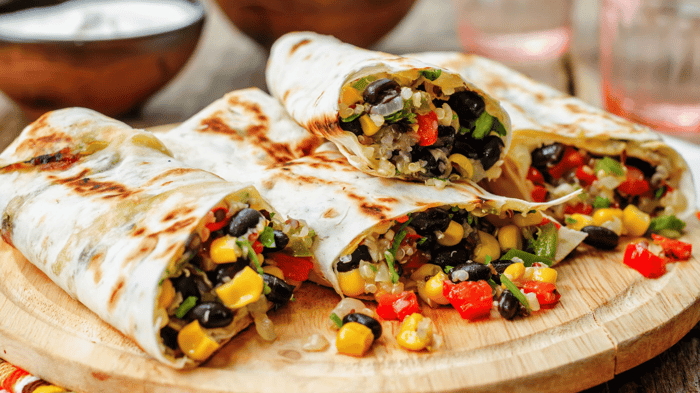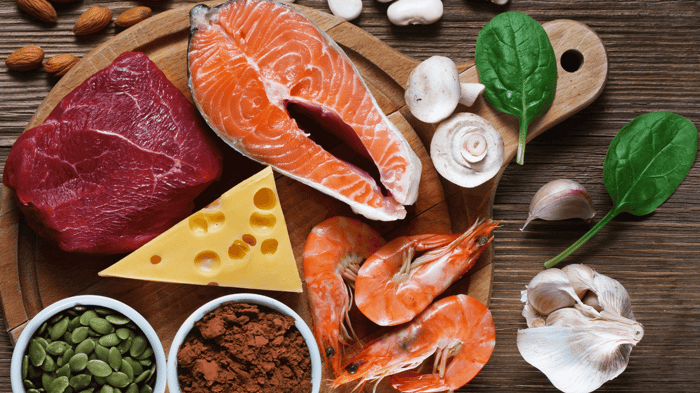
There are many health benefits to going vegetarian or eating less meat, including better heart health, easier weight management and a broader spectrum of vitamins naturally included in your diet. Deliberately cutting out meat for just one or two days per week is also a small change that can have a big impact on your environmental footprint.
However, it’s important to be intentional about the meals you make on those meat-free days, especially if you’re new to meatless meal-planning! Animal products are the primary source of many important nutrients in the typical American diet, such as protein and iron, and skipping meat doesn’t mean you should skip on those nutrients.
The recommended daily value for protein is 50g, or approximately 10% of your daily calorie count. I hope this simple guide to a few of the most popular plant-based, vegan protein sources is a helpful starting place for you!
What’s the difference between protein from meat and protein from plants?
Proteins are one of the three macronutrients that your body uses for energy (the other two are lipids, or fats, and carbohydrates), and is a primary building block of our musculature and of cells throughout our bodies. Proteins themselves are made up of building blocks called amino acids, of which there are twenty. When you eat protein, your body breaks it down to these amino acids and then uses them for energy or to construct the proteins that you need.
Humans are able to synthesize eleven amino acids ourselves and the other nine, known as the essential amino acids, must be included in our diet. Animal proteins contain all nine--for that reason, they are often referred to as “complete proteins.” Protein from plants, meanwhile, typically lacks one or two of these amino acids, so it’s important to eat several complementary foods each day to get all nine.
There is a common myth that these complementary foods need to be eaten in the same meal for them to act as a complete protein. Recent research has shown that amino acids are stored in the body, ready for use, for approximately 24 hours before they are broken down for energy. So while beans and rice go well together, it’s not necessary to combine them in a meal for them to act as a complete protein--just make sure to eat them in the same day.
Our Guide to Plant Protein
Legumes
Affordable, straightforward and versatile, legumes are a staple of the vegetarian diet. Soy, the most protein-packed legume, has its own heading below, but the rest of the family is well-endowed with amino acids as well.
Lentils (18g per cup) and are an excellent base for curries and dals. Chickpeas (12g per cup) add texture and filling power to salads, and I like to keep hummus in the fridge for a quick, healthy snack. Beans (pinto, kidney, black, navy, and lima; 15g per cup) are substantive and flavorful, and make a great meat substitute in many dishes, like tacos, and a great base for chilis.
Peanuts (7g per 1 oz) are a huge source of protein for me personally: I think I’ve found a way to incorporate peanut butter into each of my usual recipes at some point or other, and I often beat sweet cravings with a big spoonful of PB!
Soy
Soybeans stand out for their high protein content and transformability. Because of the diverse forms that it takes, it is easy to incorporate soy into your regular diet. Edamame (31g per cup) is immature soybeans, boiled and served, and is a delicious and simple side.
Tofu (10g per cup) easily substitutes into many meat-based recipes. Once you get the hang of cooking it, enjoy the many textures and flavors that you can achieve. Tempeh (15g per ½ cup) has a denser, grittier texture that more closely mimics the toughness of meat but also has a more unique flavor.
Nuts
Walnuts (5g per ¼ cup), cashews (5g per 1 oz), pecans (3g per 1 oz) and almonds (7g per cup) are great in salads, desserts, on their own or as nut butter. At my house we ate nuts mostly as a snack (fancy mixed nuts, anybody?) until we decided to reduce meat consumption, and with a little creativity we found many unexpected places that we could use them, like pesto.
Seeds and Grains
Looking for big nutritional value in a small package? Seeds and grains are packed with all the nutrients that plants need to grow, so it’s no wonder they’re commonly called superfoods. Quinoa (9g per cup) is my personal favorite, which I use as a base for salads and power bowls.
Chia (3g per tablespoon) and hemp seeds (3g per tablespoon) have a big impact on the nutrition of your dish when added in small quantities, and I’m guilty of adding them in whenever I can. They’re standard ingredients in my salad and yogurt bowls, but their unassuming size and lack of flavor means I can sneak them into a whole lot of other dishes too.
Have you gotten to this point and are still worried about your daily protein? The 5g per cup of brown rice and 7g per ½ cup of dry oatmeal should relax you a bit. These grains are the foundation of so many delicious breakfast, lunch and dinner options that you’d be hard-pressed not to find a few you like.
Vegetables
Did you know that several green vegetables are high in protein too? Notably, spinach (5g per cup) is also high in iron, making it a great alternative to red meat in terms of power nutrients. Broccoli is also protein-packed for a veggie with 4g per cup.
Single-celled Organisms
If you like the condensed nutrition of seeds, you’ll love these superfood powders. Nutritional yeast (8g per ¼ cup) is deactivated yeast with a savory flavor and big nutritional value. It’s best when sprinkled on as a seasoning or used to create a convincing cheese-flavor substitute. Spirulina (5g per tablespoon) is a seaweed made up of cyanobacteria. Depending on the source it can range in color from muddy green to bright blue, and is an exciting and healthful addition to smoothies or baking.










